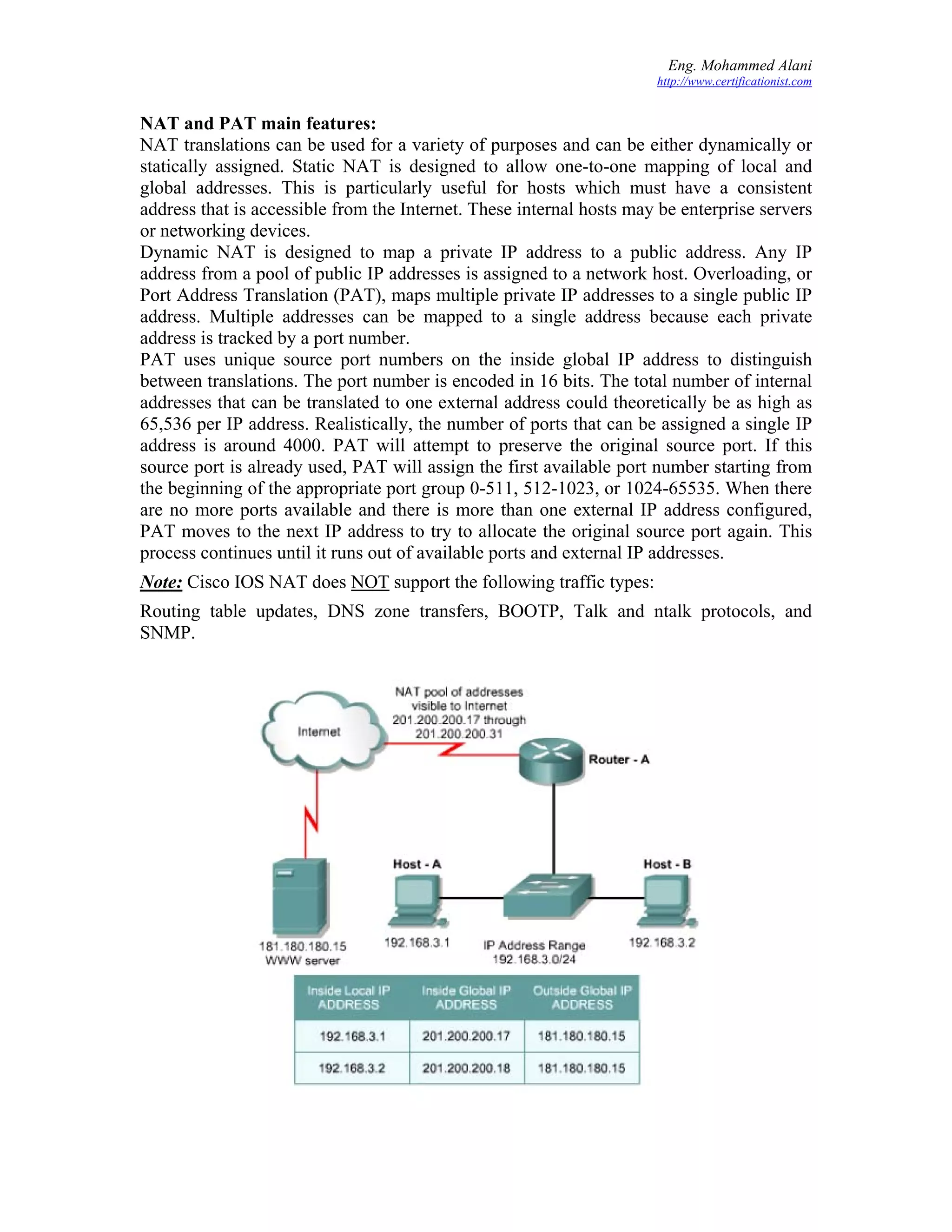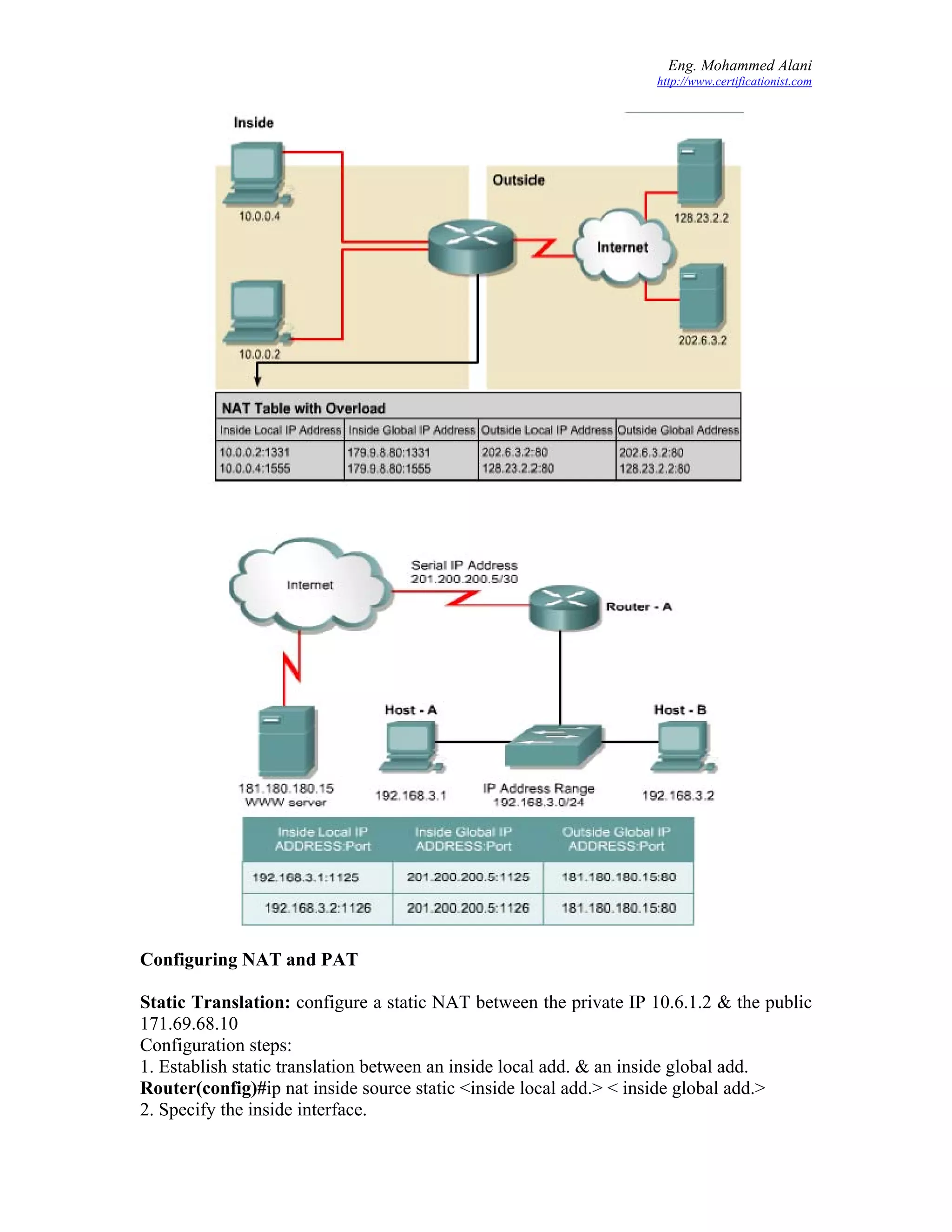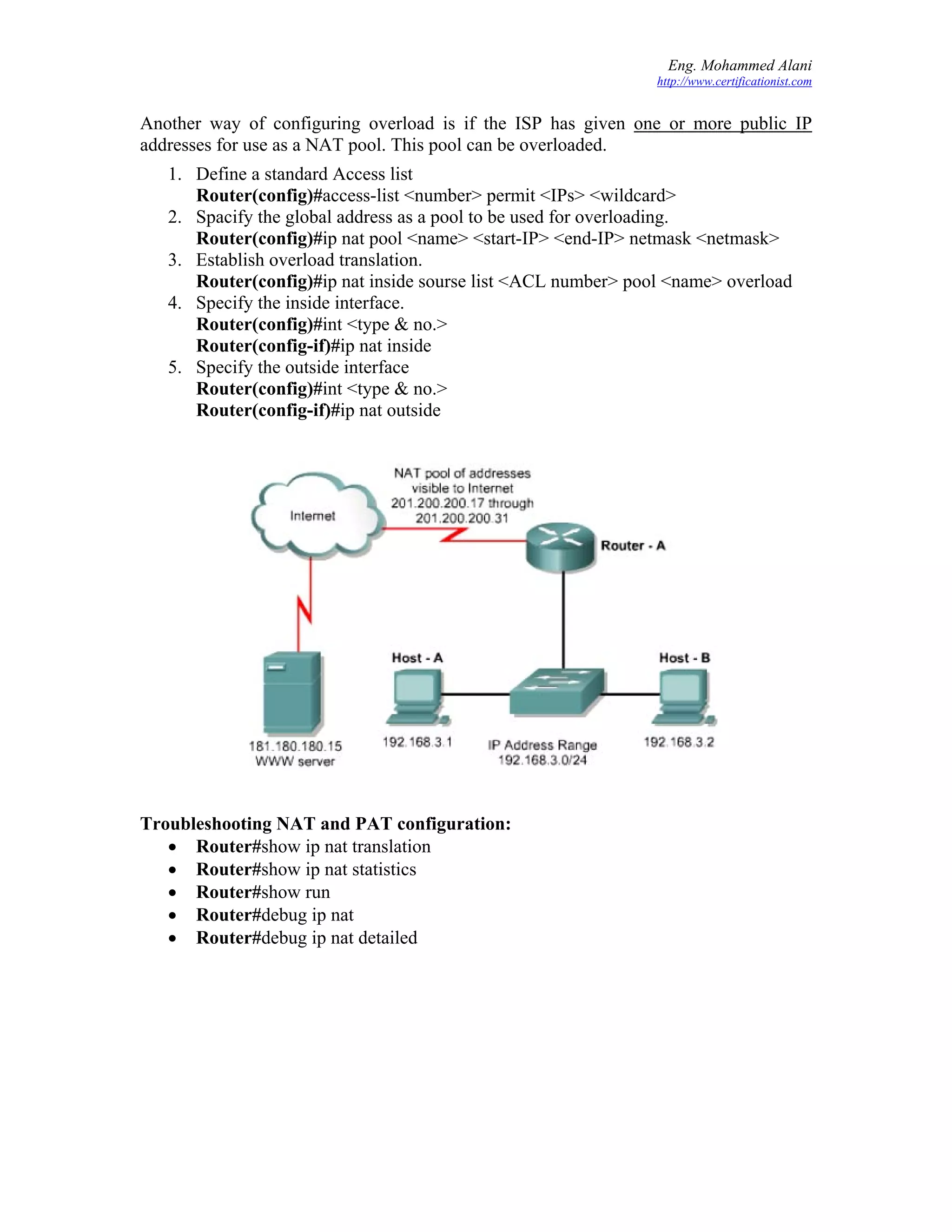Embed presentation
Downloaded 563 times










This document discusses Network Address Translation (NAT) and Port Address Translation (PAT). It defines key NAT terms and private IP address ranges. It then describes the main features of NAT and PAT, including static and dynamic NAT mappings and how PAT uses port numbers to map multiple private IPs to a single public IP. The document provides examples for configuring static NAT, dynamic NAT, and PAT. It also discusses troubleshooting NAT and changing dynamic NAT configurations.
Overview of NAT terms like Inside/Outside local/global addresses, and RFC 1918 private address ranges.
Explains dynamic and static NAT, with details on PAT, port tracking, and limitations on traffic types.
Steps to configure Static and Dynamic NAT, including defining address pools and access lists.
How to configure overloading, troubleshooting NAT issues, and using commands for analysis.
Methods to change NAT settings and disable NAT on routers while managing translations efficiently.
Detailed example of NAT configuration with static and dynamic IP allocation from an ISP.
Considerations for NAT configuration when dealing with a limited number of public IP addresses.









